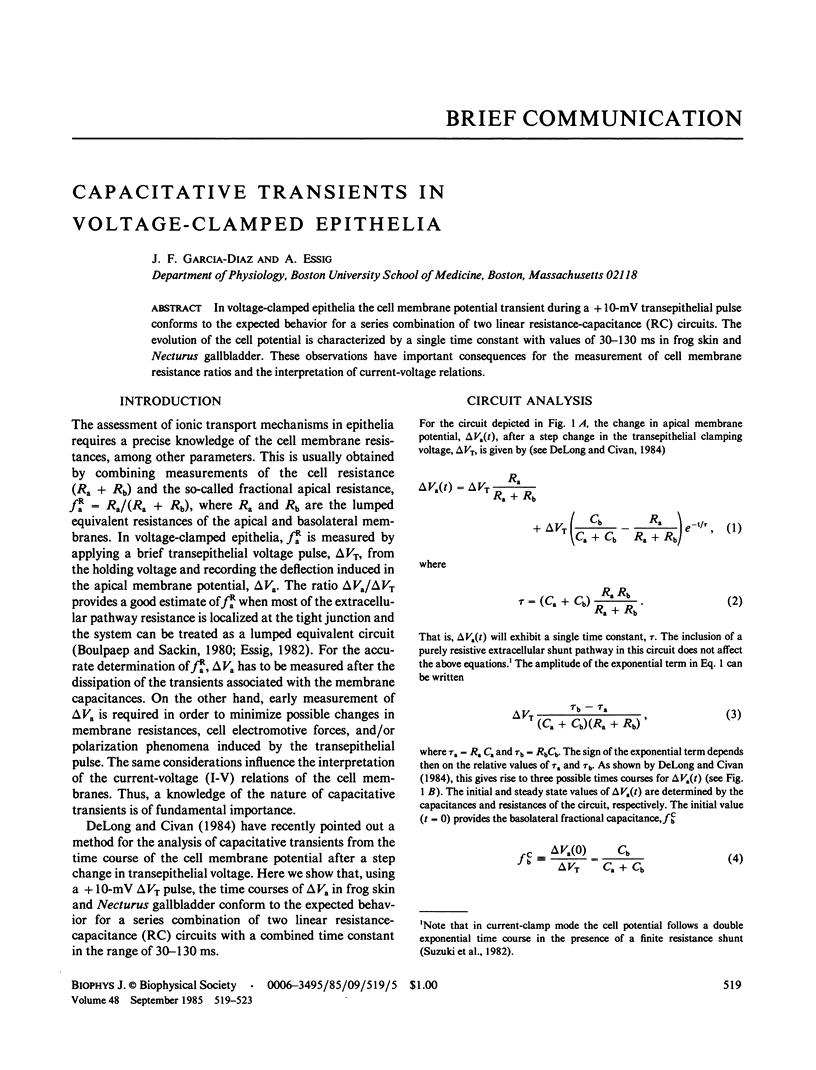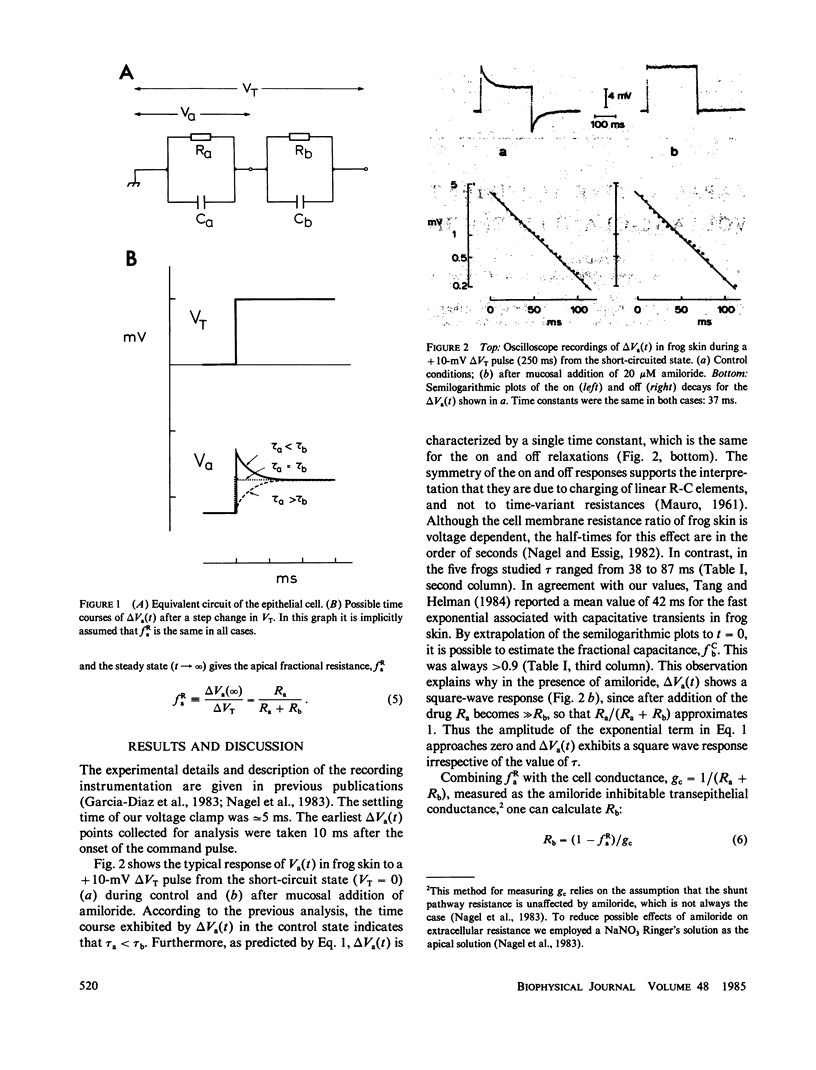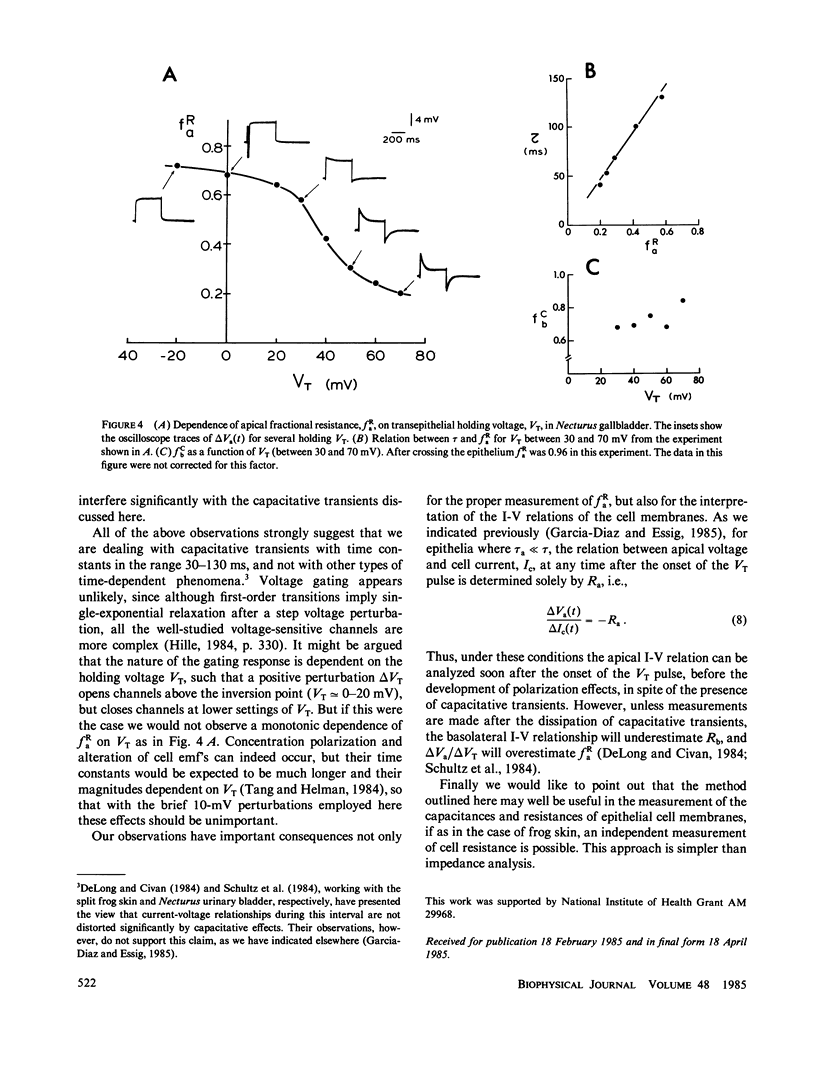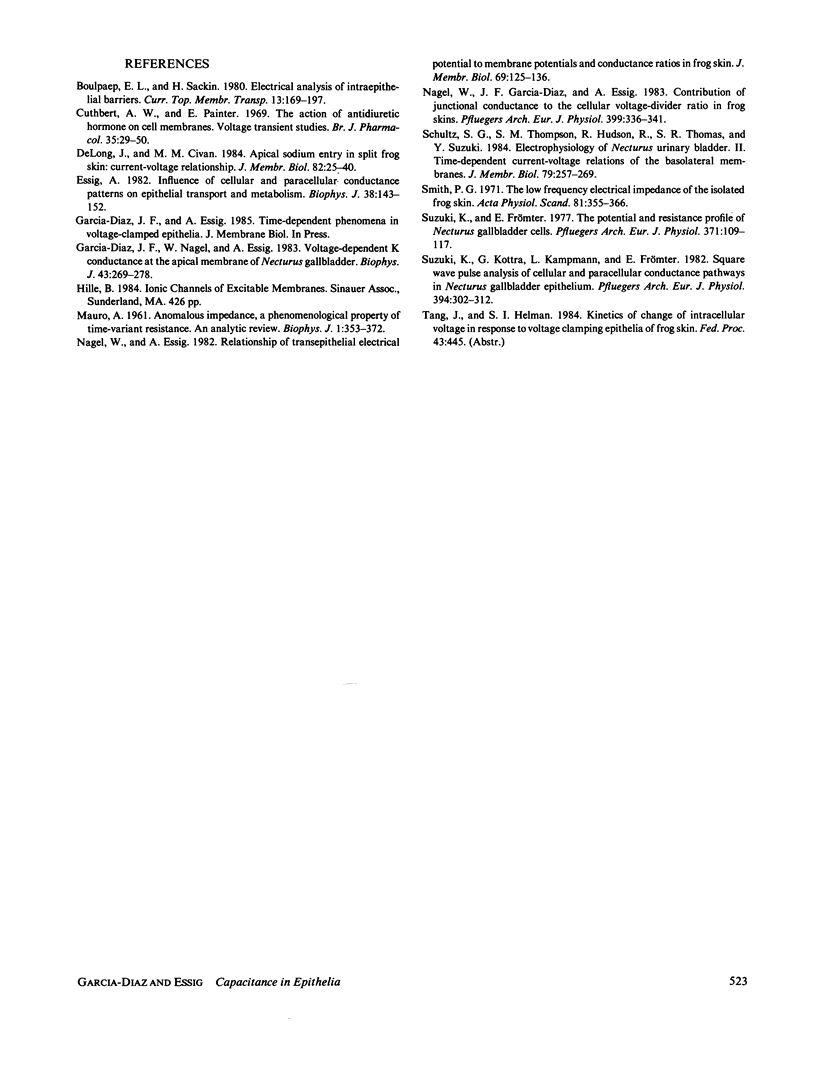Abstract
In voltage-clamped epithelia the cell membrane potential transient during a + 10-mV transepithelial pulse conforms to the expected behavior for a series combination of two linear resistance-capacitance (RC) circuits. The evolution of the cell potential is characterized by a single time constant with values of 30-130 ms in frog skin and Necturus gallbladder. These observations have important consequences for the measurement of cell membrane resistance ratios and the interpretation of current-voltage relations.
Full text
PDF




Selected References
These references are in PubMed. This may not be the complete list of references from this article.
- Cuthbert A. W., Painter E. The action of antidiuretic hormone on cell membranes. Voltage transient studies. Br J Pharmacol. 1969 Jan;35(1):29–50. doi: 10.1111/j.1476-5381.1969.tb07965.x. [DOI] [PMC free article] [PubMed] [Google Scholar]
- DeLong J., Civan M. M. Apical sodium entry in split frog skin: current-voltage relationship. J Membr Biol. 1984;82(1):25–40. doi: 10.1007/BF01870729. [DOI] [PubMed] [Google Scholar]
- Essig A. Influence of cellular and paracellular conductance patterns on epithelial transport and metabolism. Biophys J. 1982 May;38(2):143–152. doi: 10.1016/S0006-3495(82)84541-4. [DOI] [PMC free article] [PubMed] [Google Scholar]
- García-Díaz J. F., Nagel W., Essig A. Voltage-dependent K conductance at the apical membrane of Necturus gallbladder. Biophys J. 1983 Sep;43(3):269–278. doi: 10.1016/S0006-3495(83)84350-1. [DOI] [PMC free article] [PubMed] [Google Scholar]
- MAURO A. Anomalous impedance, a phenomenological property of time-variant resistance. An analytic review. Biophys J. 1961 Mar;1:353–372. doi: 10.1016/s0006-3495(61)86894-x. [DOI] [PMC free article] [PubMed] [Google Scholar]
- Nagel W., Essig A. Relationship of transepithelial electrical potential to membrane potentials and conductance ratios in frog skin. J Membr Biol. 1982;69(2):125–136. doi: 10.1007/BF01872272. [DOI] [PubMed] [Google Scholar]
- Nagel W., Garcia-Diaz J. F., Essig A. Contribution of junctional conductance to the cellular voltage-divider ratio in frog skins. Pflugers Arch. 1983 Dec;399(4):336–341. doi: 10.1007/BF00652761. [DOI] [PubMed] [Google Scholar]
- Schultz S. G., Thompson S. M., Hudson R., Thomas S. R., Suzuki Y. Electrophysiology of Necturus urinary bladder: II. Time-dependent current-voltage relations of the basolateral membranes. J Membr Biol. 1984;79(3):257–269. doi: 10.1007/BF01871064. [DOI] [PubMed] [Google Scholar]
- Smith P. G. The low-frequency electrical impedance of the isolated frog skin. Acta Physiol Scand. 1971 Mar;81(3):355–366. doi: 10.1111/j.1748-1716.1971.tb04910.x. [DOI] [PubMed] [Google Scholar]
- Suzuki K., Frömter E. The potential and resistance profile of Necturus gallbladder cells. Pflugers Arch. 1977 Oct 19;371(1-2):109–117. doi: 10.1007/BF00580778. [DOI] [PubMed] [Google Scholar]
- Suzuki K., Kottra G., Kampmann L., Frömter E. Square wave pulse analysis of cellular and paracellular conductance pathways in Necturus gallbladder epithelium. Pflugers Arch. 1982 Oct 1;394(4):302–312. doi: 10.1007/BF00583694. [DOI] [PubMed] [Google Scholar]


